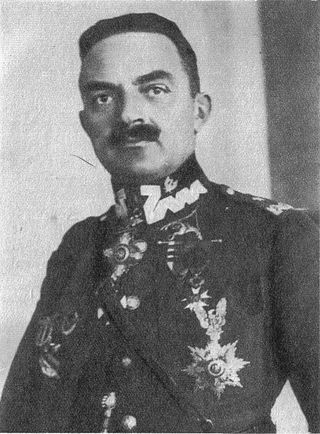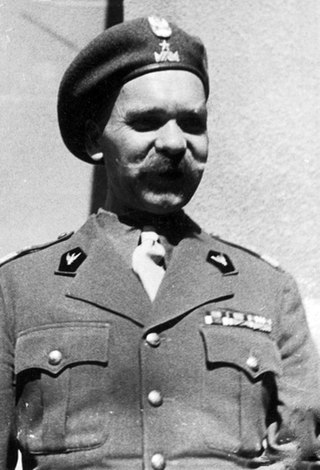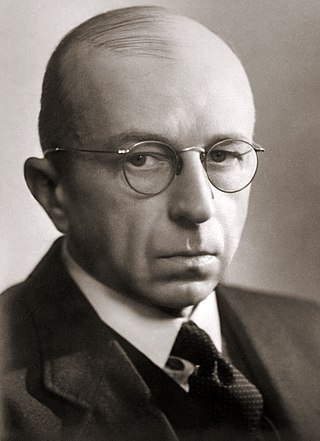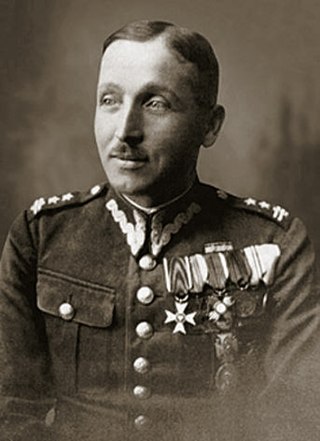
The Republic of Central Lithuania, commonly known as the Central Lithuania, and the Middle Lithuania, was an unrecognized short-lived puppet republic of Poland, that existed from 1920 to 1922. It was founded on 12 October 1920, after Żeligowski's Mutiny, when soldiers of the Polish Army, mainly the 1st Lithuanian–Belarusian Infantry Division under Lucjan Żeligowski, fully supported by the Polish air force, cavalry and artillery, attacked Lithuania. It was incorporated into Poland on 18 April 1922.

Lucjan Żeligowski was a Polish-Lithuanian general, politician, military commander and veteran of World War I, the Polish-Soviet War and World War II. He is mostly remembered for his role in Żeligowski's Mutiny and as head of a short-lived Republic of Central Lithuania.

Władysław Bortnowski was a Polish historian, military commander and one of the highest ranking generals of the Polish Army. He is most famous for commanding the Pomorze Army in the Battle of Bzura during the invasion of Poland in 1939. He is also notable for serving as president of the Józef Piłsudski Institute of America between 1961 and 1962.

Jerzy Włodzimierz Świrski was a Polish vice admiral and officer in the Russian Imperial Navy and later the Polish Navy. As Chief of the Polish Naval Command (1925-1947), he was a member of an elite group of high ranking Polish naval officers from foreign navies who became founder members of the re-established naval forces of the newly independent Poland after World War I. During World War II, Polish naval forces under his command, were embedded with the Royal Navy and contributed significantly to the success of Britain's maritime war effort. He notably fell out with Poland's war time Prime Minister-in-exile, General Sikorski, but was backed by the British and survived in post. He was appointed an Honorary Knight Commander of the Order of the Bath.

Stefan Mokrzecki of Ostoja coat of arms (1862–1932) was a general in the Russian Army and the Polish Army. During Polish-Soviet War commanded 8 DP and other units. Later member of armed forces of Republic of Central Lithuania. Retired in 1925. He was brother of Adam Mokrzecki that also was a general in Russian army to end as general of Polish army. He was born in Dzitryki, now in Belarus.

Włodzimierz Zagórski of the Clan of Ostoja was an Austro-Hungary military intelligence soldier, Polish brigadier general, staff officer, and aviator.

Żeligowski's Mutiny was a Polish false flag operation led by General Lucjan Żeligowski in October 1920, which resulted in the creation of the Republic of Central Lithuania. Polish Chief of State Józef Piłsudski surreptitiously ordered Żeligowski to carry out the operation, and revealed the truth only several years afterwards. The area was formally annexed by Poland in 1922 and recognized by the Conference of Ambassadors as Polish territory in 1923. The decision was not recognized by Lithuania, which continued to claim Vilnius and the Vilnius Region, and by the Soviet Union.

Nikodem Sulik-Sarnowski was an officer of the Russian Imperial Army, and Generał brygady of the Polish Army.

Adam Ignacy Koc was a Polish politician, MP, soldier, journalist and Freemason. Koc, who had several noms de guerre, fought in Polish units in World War I and in the Polish–Soviet War.

Marian Stanisław Chodacki was a Polish diplomat, intelligence officer, certified colonel of the Polish Army, and executive director of the Józef Piłsudski Institute of America.

Ludwik de Laveaux was a brigadier general of the Polish Army in World War I, World War II and Polish–Soviet War.

Edmund Wacław Heldut - Tarnasiewicz alias " Heldut ". He was the senior colonel and commander of the Polish Army cavalry, a senior military official of the Polish Armed Forces in the West, who received Poland's highest military award, the Virtuti Militari, one of the oldest military decorations in the world still in use. He was heavily involved in World War I, the Polish–Soviet War, and World War II. Heldut was promoted to General, but the promotion was never confirmed due to the outbreak of World War II. On October 6, 2021, President Andrzej Duda officially and posthumously confirmed Heldut to Brigadier General.

Treaty of Kaunas was a treaty signed on 29 November 1920 in Kaunas, Lithuania, that the next day started the armistice between Lithuania and Central Lithuania ending the Central Lithuanian Offensive on Kaunas. The treaty was drafted between 27 and 29 November 1920, during the peace negotiations between Lithuania and Poland led by the League of Nations.

The Central Lithuanian Offensive on Kaunas was a military offensive of the Republic of Central Lithuania, led by General Lucjan Żeligowski, on the territories of Lithuania, that took place between October and 30 November 1920.

Stanisław Dąbek was a Polish infantry colonel in the Polish Armed Forces, he was commander of the Marine Brigade of National Defense and acting commander of the Land Defense of the Coast during the Invasion of Poland; posthumously promoted to the rank of brigadier general.

Jan Franciszek Gaładyk was a Polish Infantry Colonel who was known for being one of the main commanders at the Battle of Węgierska Górka as well as commanding the 1st Mountain Brigade during the Invasion of Poland.

Julian Edwin Arnoldt-Russocki was a Polish lieutenant colonel of the Polish Armed Forces who commanded the 16th Greater Poland Uhlan Regiment during the early battles of the Invasion of Poland and was the main commander at the Battle of Bukowiec before being captured two days later.

Władysław Kaliński was a Polish Chartered Infantry Colonel who commanded the 13th Infantry Division during World War II and led the Battle of Tomaszów Mazowiecki before being captured after the fall of Warsaw.

Ludwik Czyżewski was a Polish General during the Invasion of Poland during World War II. He commanded the 2nd Legions' Infantry Regiment during the Battle of Borowa Góra but was defeated in the battle. He was also a member of the Border Protection Corps as well as the Home Army before being posthumously promoted to Brigadier General in 1972 by the President-in-Exile, Stanisław Ostrowski.
Witold Abramowicz was a politician and jurist. In 1919, he served as the mayor of Vilnius, Lithuania, and from 12 October 1920 to 16 January 1921, he was the chairperson of the Provisional Governing Commission, an executive government of the Republic of Central Lithuania. In 1922, he was the leader of the Democratic Party, which he represented in the Sejm of Central Lithuania from 1 February to 1 March 1922. From 11 March 1928 to 10 July 1935, he represented the Nonpartisan Bloc for Cooperation with the Government for Vilnius electoral district, in the Senate of Poland.




















